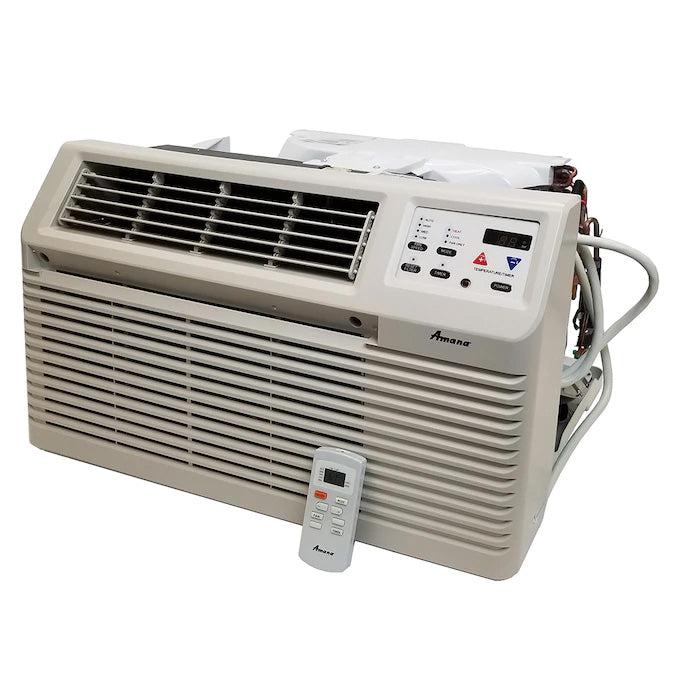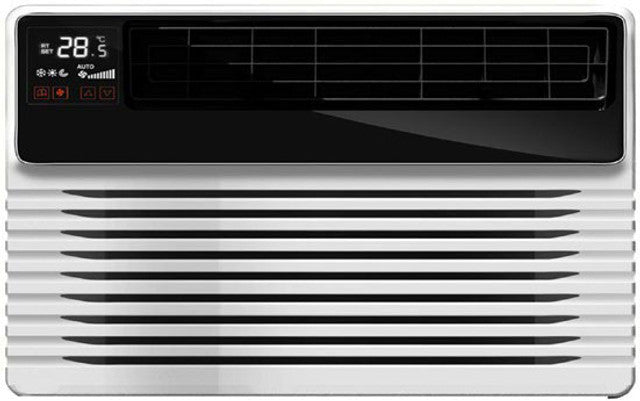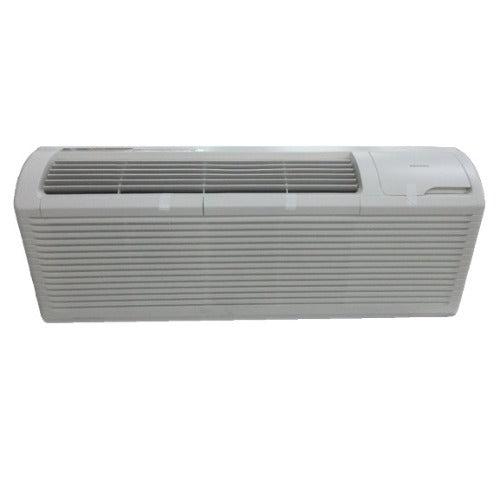Best 9,000 BTU Through The Wall AC Unit
14 products
Showing 1 - 14 of 14 products
9,000 BTU through-the-wall air conditioners and mini PTACs (Packaged Terminal Air Conditioners) are compact and efficient climate control systems ideal for cooling and heating small spaces. These units are widely used in residential settings, such as apartments and small homes, as well as in commercial environments, including hotel rooms, offices, and dormitories. Below, we will explore the key features, benefits, and applications of 9,000 BTU through-the-wall air conditioners and mini PTACs, focusing on their energy efficiency, space-saving design, and overall versatility.
1. Efficient Cooling and Heating for Small Spaces
A 9,000 BTU through-the-wall air conditioner is perfect for rooms between 350 and 400 square feet. This capacity makes these units ideal for smaller spaces like bedrooms, studio apartments, home offices, and hotel rooms. Despite their lower BTU rating compared to larger models, 9,000 BTU units are highly effective at providing targeted cooling, ensuring that rooms of this size maintain a comfortable temperature without excessive energy consumption.
Mini PTACs with a 9,000 BTU capacity offer both cooling and heating functions, making them an excellent choice for year-round use. The heating option is especially beneficial in regions with seasonal temperature fluctuations, as it eliminates the need for separate heating systems, further enhancing the convenience and utility of these units.
2. Energy Efficiency
Energy efficiency is a major benefit of 9,000 BTU through-the-wall air conditioners and mini PTACs, particularly when it comes to reducing utility costs for property owners and tenants. Many of these units come with high Energy Efficiency Ratios (EER), a key metric that indicates how much cooling or heating a unit can provide per watt of energy consumed. Units with a higher EER are more efficient, resulting in lower operational costs over time.
For commercial settings like hotels or multi-family buildings, mini PTACs often feature built-in energy management systems (EMS) that help further reduce energy consumption. These systems may include features such as occupancy sensors, which detect whether a room is in use and adjust the temperature accordingly, saving energy when rooms are unoccupied. This energy-saving capability is highly valued in hospitality and commercial environments, where energy costs can add up quickly across multiple units.
3. Compact, Space-Saving Design
9,000 BTU through-the-wall air conditioners are designed to be installed through an exterior wall, which keeps them out of the way and allows for more efficient use of interior space compared to window-mounted units. This design is ideal for rooms where floor space is limited, and it also ensures that windows remain unobstructed, preserving natural light and views. Through-the-wall units also offer a more secure installation than window units, as they don’t provide potential entry points for intruders.
Similarly, mini PTACs are compact versions of standard PTACs, specifically designed for smaller spaces. They offer the same through-the-wall installation benefits but are tailored to the needs of smaller rooms, such as hotel rooms, dormitories, or studio apartments. Their smaller footprint makes them highly versatile, and they can be installed discreetly without dominating a room's aesthetic or layout.
4. Quiet Operation
9,000 BTU through-the-wall air conditioners and mini PTACs are engineered for quiet operation, making them ideal for environments where noise levels need to be kept low, such as bedrooms, hotels, and offices. Many units incorporate sound-dampening technology, such as insulated cabinets and quieter fans, which reduce the noise generated during operation. This ensures a more peaceful and comfortable environment, particularly in settings where maintaining quiet is essential for residents, guests, or workers.
5. Durability and Low Maintenance
Both 9,000 BTU through-the-wall air conditioners and mini PTACs are built to be durable, with high-quality components that ensure they can withstand frequent use in both residential and commercial settings. These units are designed for long-term performance, requiring minimal maintenance. Many models come with washable and replaceable filters, which help to improve indoor air quality and ensure the unit runs efficiently over time.
The durability of these systems is particularly important in environments like hotels and apartment buildings, where units may be in continuous use. Their reliability reduces the need for costly repairs and replacements, making them a cost-effective choice for property managers and homeowners alike.
6. Versatile Applications
Both 9,000 BTU through-the-wall air conditioners and mini PTACs are highly versatile and can be used in a variety of settings. Through-the-wall air conditioners are commonly found in residential spaces like bedrooms and small living areas, providing a convenient cooling solution for spaces that don't have central air conditioning.
Mini PTACs are frequently used in commercial settings, such as hotels, motels, healthcare facilities, and senior living centers, where efficient, self-contained heating and cooling systems are essential. These units provide a convenient all-in-one solution, offering both heating and cooling without the need for separate HVAC systems, making them particularly valuable in environments that require independent room climate control.
Conclusion
9,000 BTU through-the-wall air conditioners and mini PTACs offer compact, energy-efficient climate control solutions for small spaces. Their space-saving design, quiet operation, and ease of maintenance make them an ideal choice for residential and commercial applications alike. With the added benefit of energy management features and a durable construction, these units provide long-term comfort and cost savings for homeowners, hotel managers, and other property owners. Whether used for cooling in the summer or heating in the winter, these units are a reliable choice for maintaining comfortable indoor environments.


























